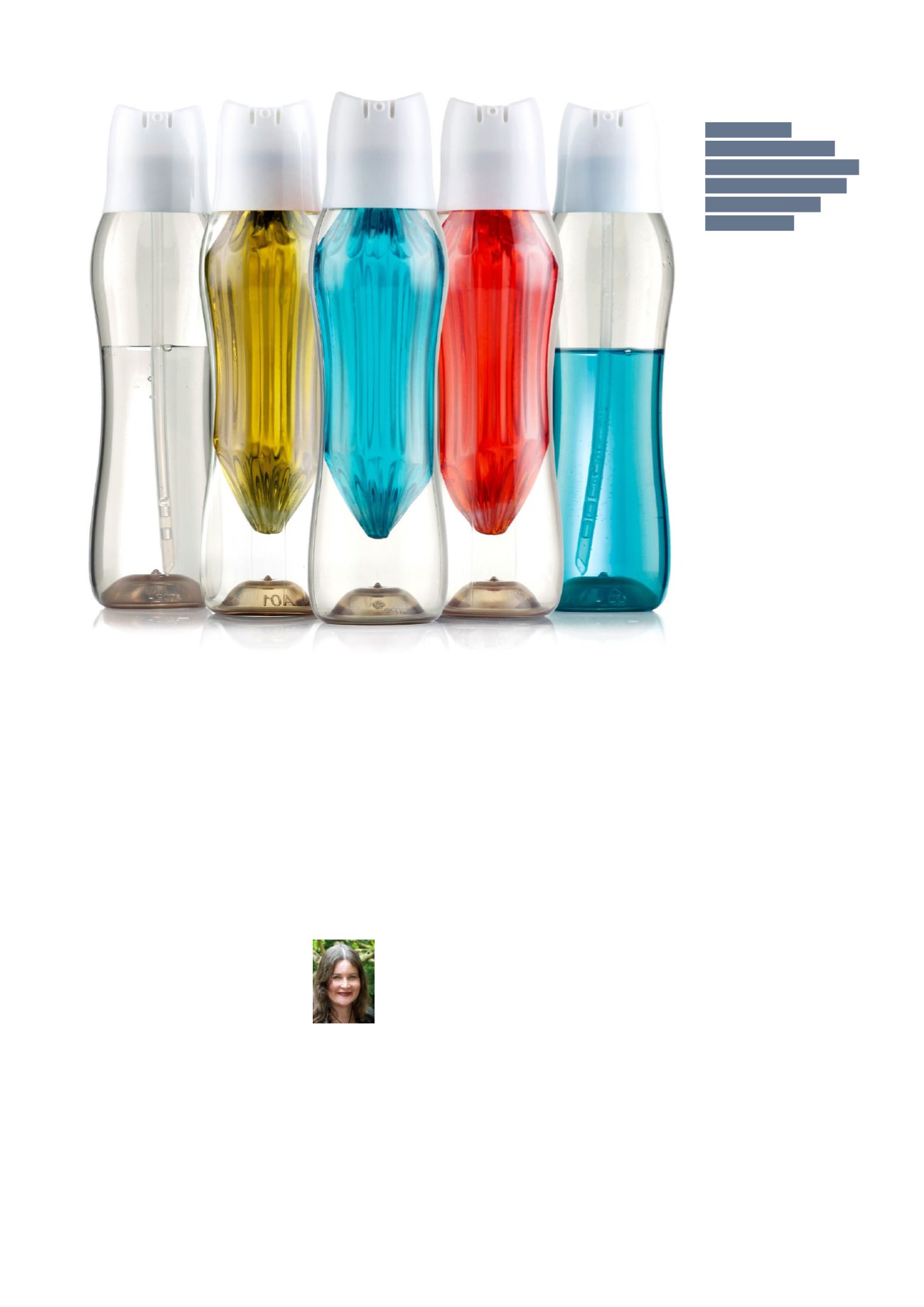
photos: Dr. Nora Schiemann, Plastipak (coloured cans)
Possibilities and limits
Plastic aerosols |
What are the pros and cons of plastic and metal aerosol cans?
L
ately, more plastic aerosol
packs have been available in
the market across Europe. Plas-
tic seems to offer opportunities to
create sustainable products. Looking
a little bit closer, however, there are
also some limitations that are even
more restrictive than those for metal
cans. After all, pressurised contain-
ers made of plastic need to comply
with the same safety targets required
for all aerosol packs:
• All aerosols in Europe have to be
temperature-resistant up to 50°C
• No leakage
• Mechanical resistance up to 50°C
and even higher (e.g. to emerge
unscathed from a hot water bath
and other special conditions that
might occur)
In addition, by no means must the me-
chanical resistance of the aerosol dis-
penser be impaired by the substances
contained in it, even during prolonged
storage. This applies to long-term re-
sistance against ingredients and the
environment (chemical and biological
resistance, UV rays etc.).
Common myths
on plastic aerosols
1.
Plastic is much cheaper than metal:
However, plastic can be much more
expensive than metal, as e.g. bever-
age bottles cannot be taken as a ref-
erence.
2.
Plastic can be shaped more at-
tractively:
However, shaping plastic
cans in an appealing way is costly.
The more complicated a shape, the
AUTHOR:
Dr Nora Schiemann, Consultant
for Technopolis Group on the evaluation of
the European Aerosol Dispensers Directive
on request of the European Commission
Cologne, Germany
DOWNLOADS
Additional information at
Your access codes for
April
:
User name:
cossma4
Password:
body
PACKAGING
50
l
COSSMA 4 I 2017


